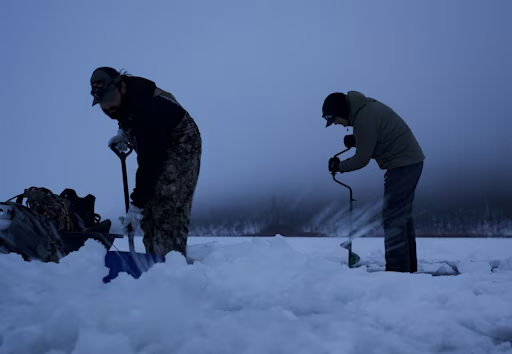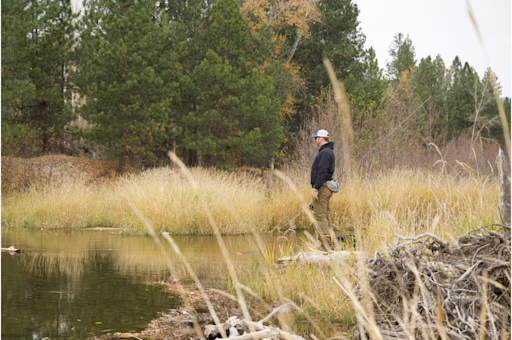Beginner's guide to fishing: Choosing a lure
Excited to hit the water and start reeling in fish? Read our how-to on choosing the right lure for the task.
Share this article

This is part II in our series of Beginner's Fishing Guides. If you're just joining, read part 1: choosing the right fishing gear.
In part 2 of our Beginner's Fishing Guides, we're going to discuss lures. Lures can be a confusing topic for a new angler. There are so many to choose from, and each type of lure performs differently. To get the lowdown on the best lures for the job, read on.
If you think your preferred style of fishing will be a worm on a hook or more of a sit and wait game, grab yourself some small hooks, maybe a little pack of sinkers and a bobber or two to get started. If you think you want to fish a more active style with artificial lures then you’ll need to understand some basics of what you’re looking at as you stand in front of wall-upon-wall of options.
First off, generally, there are hard baits and soft baits. Soft baits will typically be added to a hook you’ve tied on. Things like worms, lizards, grubs, fake fish are all soft plastics and are an extremely effective way to fish as well as being lighter on the wallet. Hard baits typically tie directly to your line, and as they’re reeled in, will elicit some kind of action on their own. In some cases that action can also be influenced by you. There are tens of thousands of different hard baits to choose from and each claim to be better than the last. We'll break them down into five basic categories
Spoons are simple to cast and retrieve lures that are shaped in a way that upon retrieval they dance and dart in the water mimicking a fleeing baitfish. They can be cast and retrieved at varying speeds, fished vertically or “jigged”. Typically they will be shiny and will catch the light well creating a “flash” in the water the same way a fish might.

Spinners are similar to spoons in how they are fished; however, instead of darting and dashing through the water, they have a rotating spoon that spins around a wire, creating a consistent motion and flash that mimics a small swimming fish. Ensure that upon retrieval the spinner is actually spinning. Like the spoon, it is extremely user and beginner-friendly.

Crankbaits are a massive category and will have many subdivisions. Essentially these are cast-and-retrieve lures that typically will have a “bill” or a “lip” on the front that will cause them to dive, swim, and wobble when retrieved. Most are designed and painted to look like bait fish. Different lips will have different effects on the lure. Check the box to see how deep the bait will dive as well as whether it floats, sinks, or suspends. These baits come in all shapes, sizes, and variants.

Topwater: baits also have an extensive range. Most fish will at some point eat things off the surface of the water and these baits are designed to replicate that. From poppers that mimic dying bait fish, to frogs, to fake mice, any angler will tell you there’s nothing like watching a fish breaching the surface of the water and violently engulfing a topwater bait. Mostly effective in the early morning and late evenings, top-water baits announce themselves with noise and movement. Every tackle box should have some style of topwater variant.

Jigs: are the final lure variant that we’re going to cover. Jigs are essentially the opposite of topwater. Lots of creatures live in and amongst the rocks beneath the water and jigs serve to get your bait there. Jigs are typically accompanied by some kind of soft plastic that mimics grubs or crayfish. While predominantly used for bottom fishing, they can also simply function as a weighted hook and can be quite versatile. If you’re wondering if bass like crayfish refer back to our first image to take a look.

How to start building your tackle box
Build your tackle box slowly by purchasing an item or two from each of these categories. It will take time to get proficient with the different styles but having a diverse tackle box will better allow you to find what’s working when you’re out on the water.
At this point, you should have a good idea of what you'll need to get started. Be sure to check back for the next installment of our beginner's guide to fishing series as we start to breakdown the challenges of fishing, being new to the hobby, and covering all the problems and challenges that pro’s never seem to run into.
If you haven't experienced the #1 fishing app worldwide, make sure and check out Fishbrain to see all the fish data, fishing spots, weather conditions you've been missing out on plus much more.
---------------------------------
This article was written by Fishbrain Pro Staff: David Schaeffer, who also moderates the awesome fishing community at Reddit.com/r/FishingForBeginners.
Follow David on Fishbrain at ShiftyUsmc

Download the Fishbrain app and access the best fishing spots in your area
Related blog posts
Master the hardwater season with advanced ice fishing tips . Learn how to find fish faster, refine your search and adjust presentations to catch more fish all winter long.

Your guide to Victoria’s best fish to catch in rivers, lakes, and coastal waters. Learn prime species, fishing tips, and key regulations

Learn how fish adapt as water temperatures cool from autumn to winter, including changes in behavior, metabolism, and habitat that help them survive.




